How the three-time Oscar-nominated designer, Arianne Phillips, created the “Rat Pack” inspired costumes using vintage looks with a contemporary eye.
Alice, a 1950s housewife played by Florence Pugh lives with her husband, Jack played by Harry Styles, in a utopian experimental community called Victory begins to worry that his glamorous company may be hiding disturbing secrets.
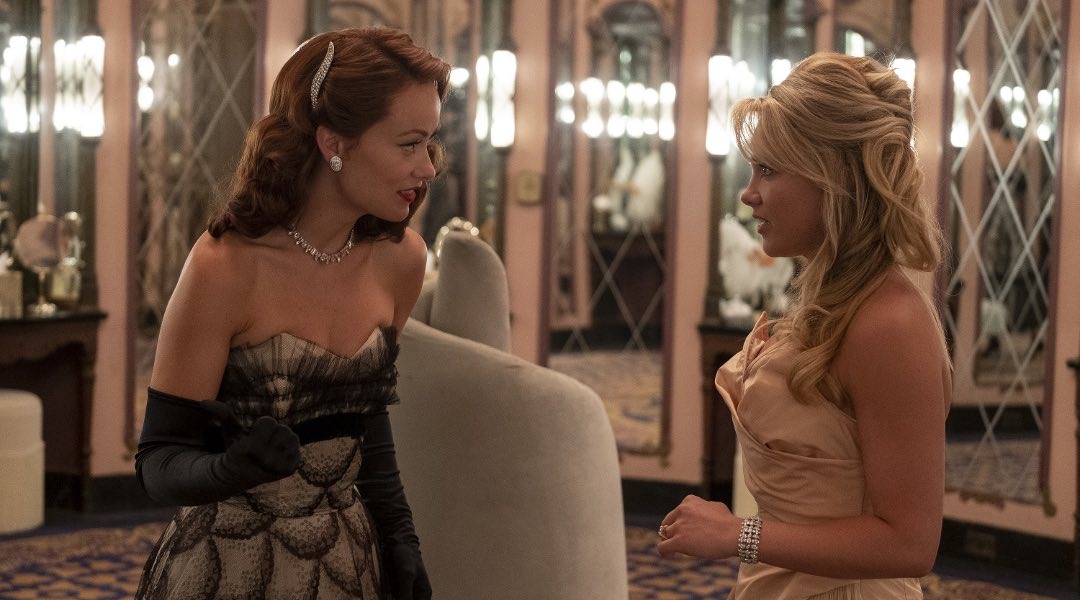
Photo Credit: Merrick Morton
The alluring and sensual world of New Line Cinema’s romantic thriller Don’t Worry Darling and the story’s utopian society celebrates the hypnotic beauty of the 1950s. Olivia Wilde who directed the film explains, “I’ve always been really inspired by design from the late ‘50s and early ‘60s: the Rat Pack, Frank Sinatra, a life of postwar excess and debauchery seemingly without consequence. It’s so seductive, the idea of a time when life seemed to be defined by the idea of enjoyment and fun.”
To dress the cast in the best fashions from the era, three-time Oscar-nominated costume designer Arianne Phillips (Once Upon a Time…In Hollywood, Walk the Line, and W.E.) benefited from Wilde’s extensive research and list of references, which included films and celebrities who exemplified the larger-than-life Victory look.
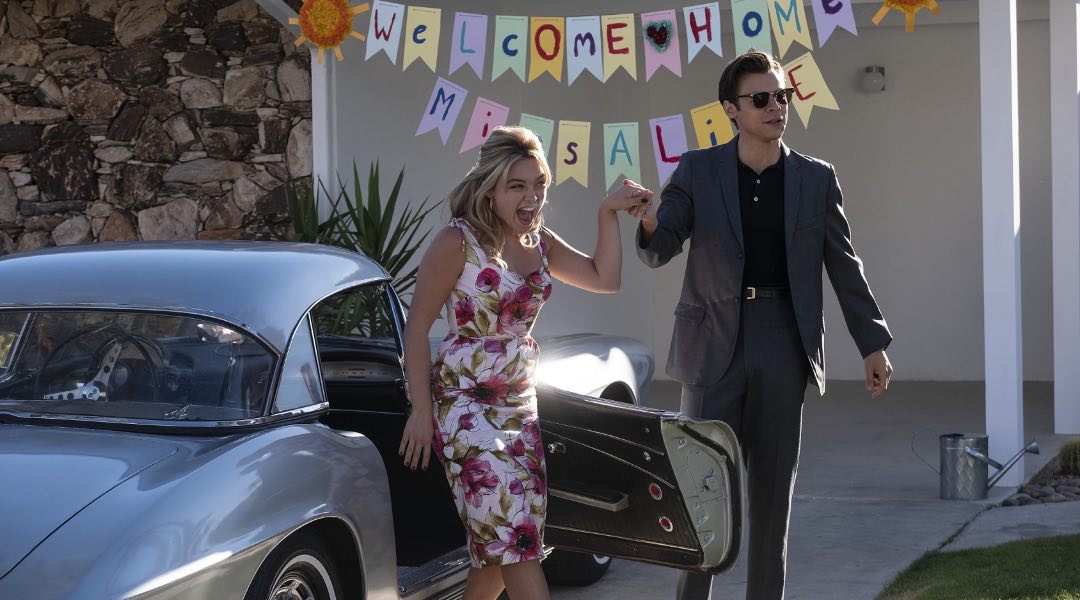
Photo Credit: Merrick Morton
For Harry Styles’ Jack, a young Warren Beatty circa Splendor In the Grass provided huge inspiration. For Florence Pugh’s/Alice’s Californian look, Phillips turned to classic images of two leading ladies of the time. The costume designer comments, “Heba and Jaime Leigh really embraced Brigitte Bardot, especially for hair and makeup, and while she’s endlessly inspiring, I also was looking at Ann-Margret, whom I love.”
Phillips continues, “I think that’s the beautiful thing about not only Alice the character—but also Florence’s interpretation of Alice: this palpable joy and energy that she brings to the role. I wanted to help promote that sense of freedom and joie de vivre through her look.”
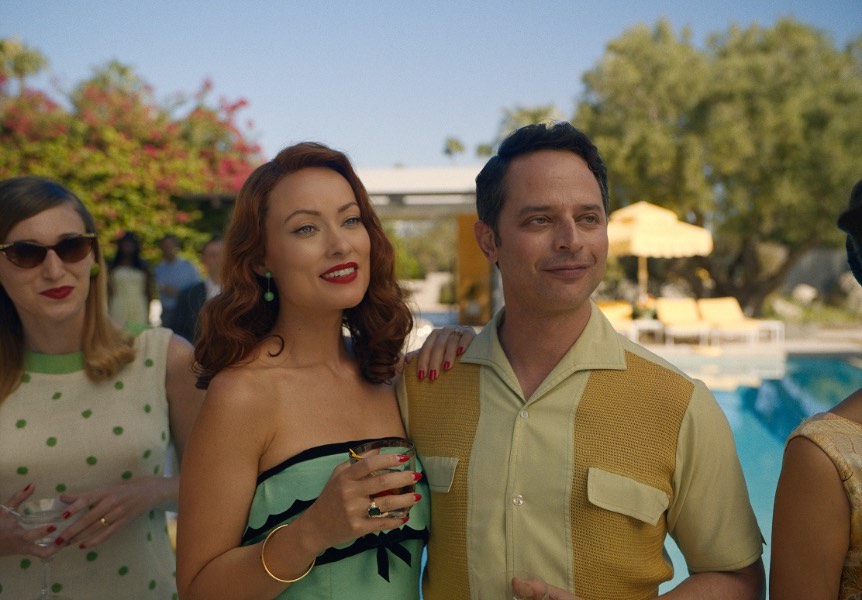
Photo Credit: Courtesy of Warner Bros. Pictures
The film director adds, “The costumes are as much a part of this world as the production design. Arianne’s work is extraordinary. I think when you’re making a period film about a period that people think they’re very familiar with, you have to create something really singular. I was passionate about this feeling somewhat unrecognizable. We had a very specific world we wanted to create, and the inspiration was clear.”
Arianne Phillips shares her process in the creating the costumes for Don’t Worry Darling by saying that “it always starts with a conversation with the director and in this case Olivia, my job is to understand her vision, what she wants to convey and help create THE world we are making with this film. We referenced a lot of mid-century design and art which informed our palette.”
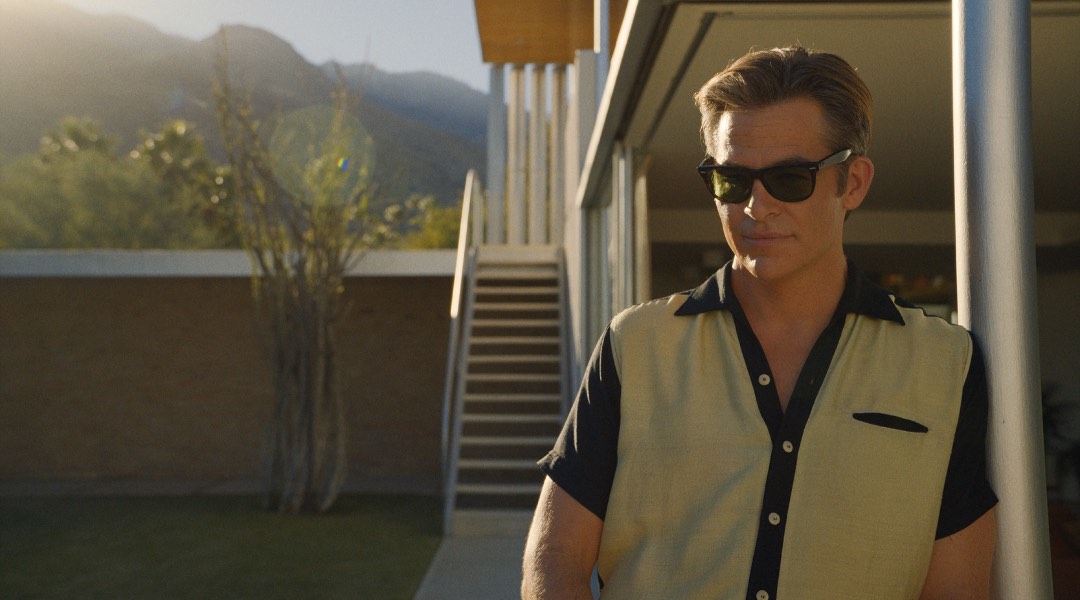
Photo Credit: Courtesy of Warner Bros. Pictures
She elaborates by saying, “We discussed he overall vision for the film and what she wants to say with the film, larger themes around the story-control, patriarchy etc… We also discussed each character in depth, their motivations and what drives them, as well as the character arcs we want to express with the costumes. Of course we discussed all facets of design, mid-century design and the visuals of the film and her vision. We spoke about tone, mood and overall pacing and emotional quality of the film. These all informed my design. Costumes are part of developing a character, so every aspect from the music to the environments, sets and locations inform my process.”
She also shared that she really leaned into the “Rat Pack” era of the late ’50s and early ’60s.
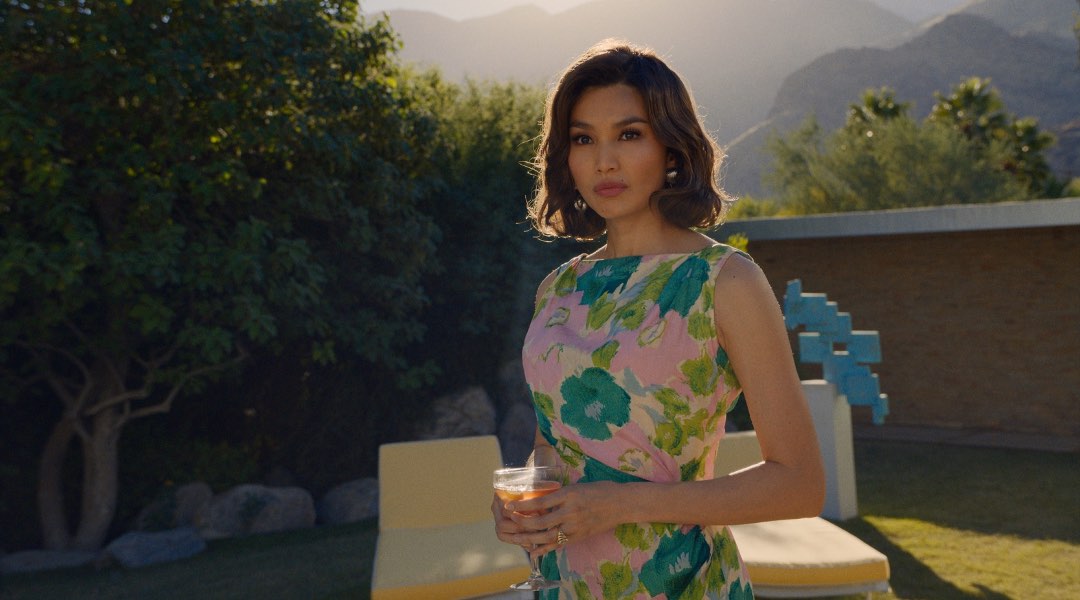
Photo Credit: Courtesy of Warner Bros. Pictures
When asked about Sita Von Teese’s cameo as the burlesque performer and if the final look was a collaboration, Phillips reveals, “Dita is a friend of mine and I have long been inspired by her! I actually suggested Dita to Olivia, which lucky for us she was available! The costume Dita wears in the film is one of her own. Olivia and I got together with her on a Saturday at her house and she generously showed us her gorgeous show costumes. Since her casting was a bit last-minute and she essentially plays herself it made the most sense.”
The designer also spoke about her favorites looks from the film, sharing: “I think of the costumes as a sum of all its parts so it isn’t always easy for me to cherry pick favorites [laughs]. What I can say is I was very pleased with the black dress Alice wears in the desert and the way it was photographed as well as the white dress at the end. I think they were successful in what I was trying to achieve. I was also very happy with the opening dress Alice wears which was a dress I designed that was inspired by some vintage 1960’s fabric I was able to source. Oh, and I was also very happy with the tailoring on all Jack’s suits, I think they also ended up looking very good on film.”
With the film introducing varying looks for women for different occasions such as sports and swimwear, it was much like a vintage catalog coming to life. Phillips comments, “It was a dream, so much fun. Research is my favorite part. I look at everything from art to reportage photography, watch movies, listen to music from the period, look at clothing catalogues fom the time period, fashion magazines, films plus TV from the era, celebrities from the time period and red carpet, etc.”
When asked which pieces from the movie would be wearable today, she answers, “That is not for me to decide. However, I did design the film for a “contemporary eye” and also made choices based on silhouettes that feel timeless and relevant today.”
With multiple accolades in costume design including the recently received Campari Passion for Film award in Venice, the designer shares that “awards and trophies are nice but never the goal nor do they ever enter my process. I learned a long time ago that investing in the process and the work is what’s valuable to me. I do not invest in outcome or how the public will respond to the work. Being true to the story and the director’s vision is what’s valuable. The best thing about being nominated, honored or awarded, is being given a platform to acknowledge the director, my fellow collaborators, my costume team and especially my mom and dad who invested in me following my passion.”
Arianne Philipps is a three-time Academy Award-nominated designer—for Quentin Tarantino’s Once Upon A Time… In Hollywood, James Mangold’s Johnny Cash biopic, Walk the Line, and Madonna’s directorial debut, W.E. Phillips also designed Tom Ford’s “Nocturnal Animals” and “A Single Man,” as well as almost all of Madonna’s music videos. She is currently working on the follow-up to Todd Phillip’s smash hit, Joker: Folie à Deux.
A New Line Cinema presentation, Don’t Worry Darling, is distributed worldwide by Warner Bros. Pictures and is set to open in cinemas across the Philippines on September 28.
Banner Photo courtesy of Merrick Morton for Warner Bros. Pictures.





